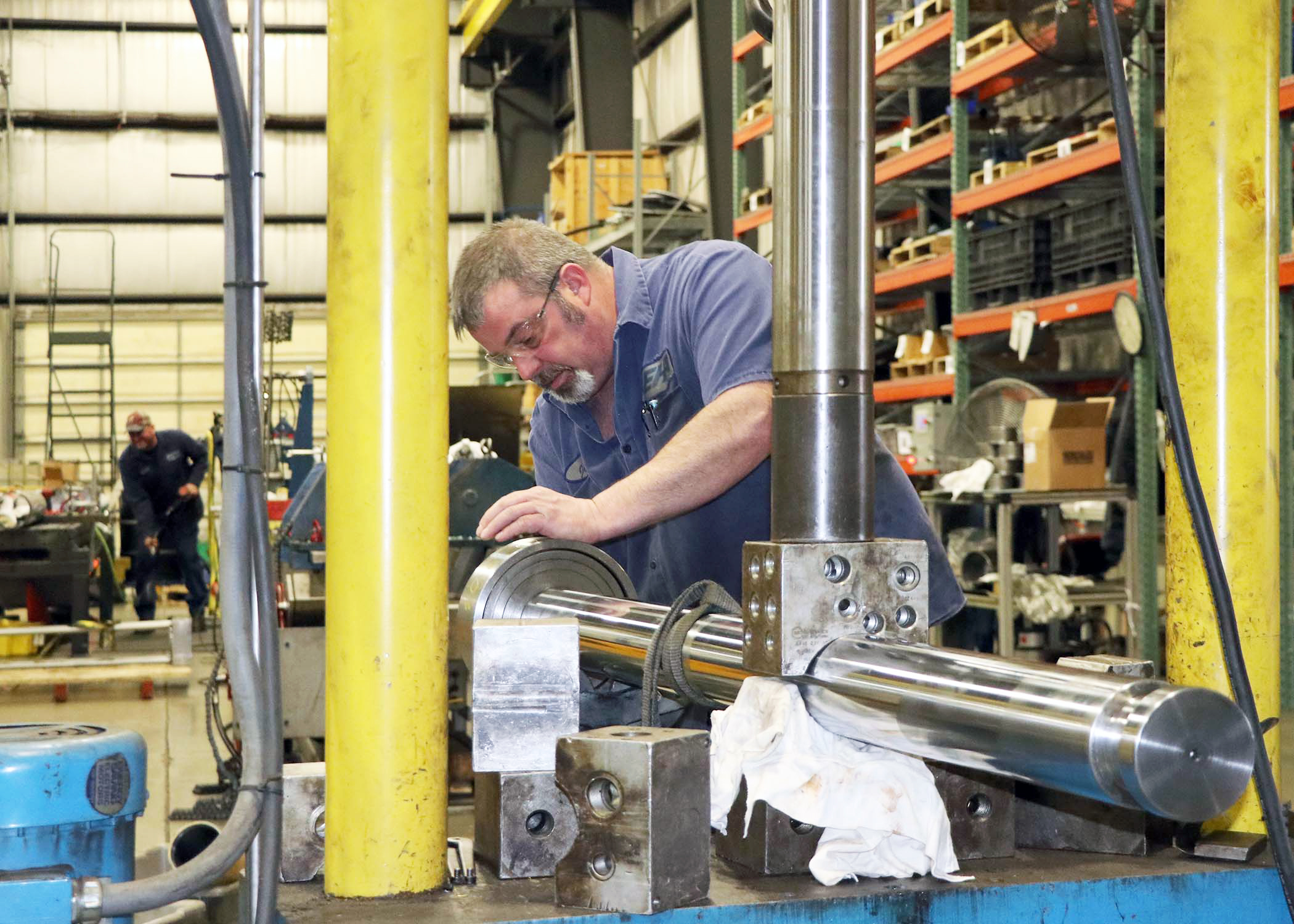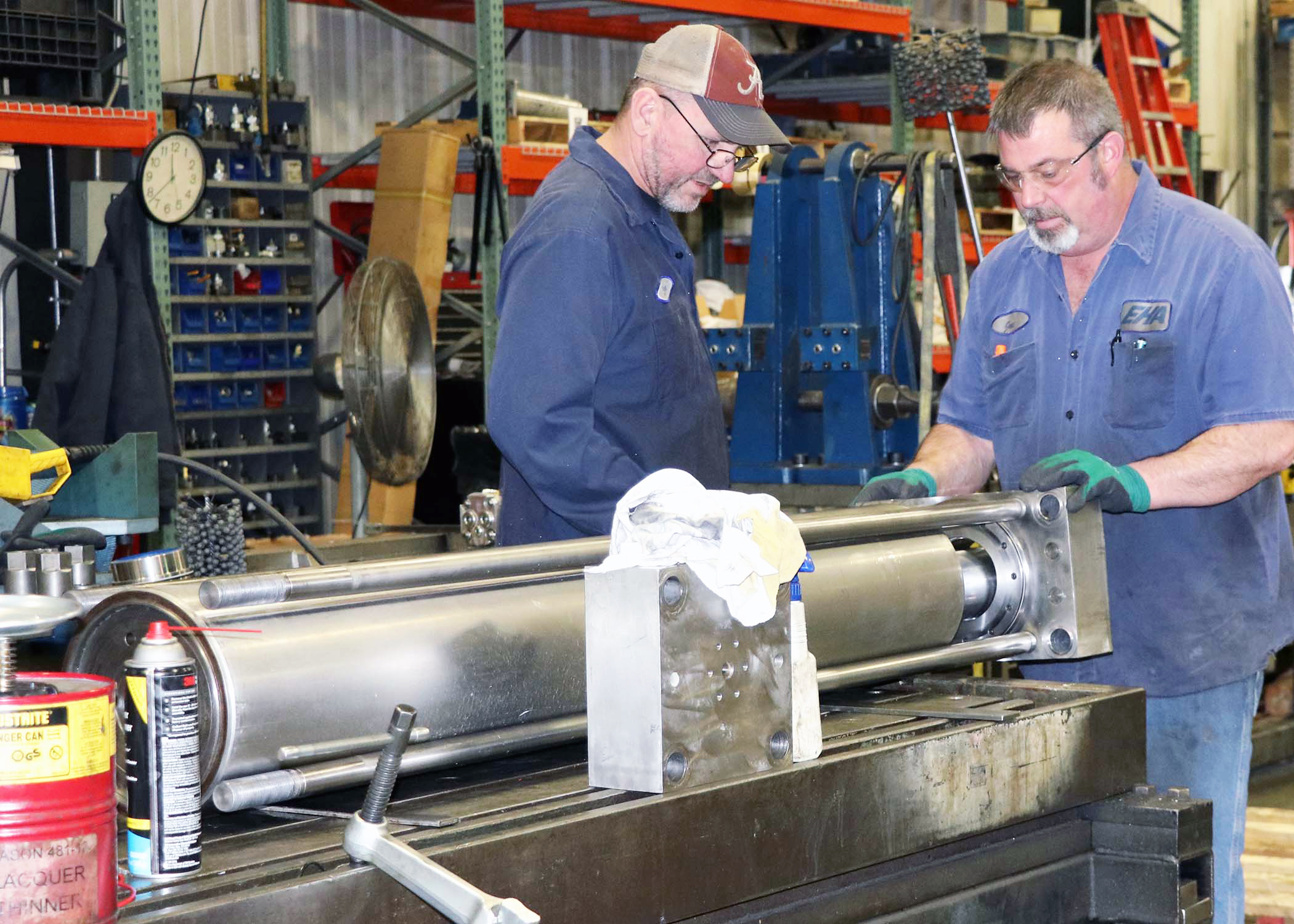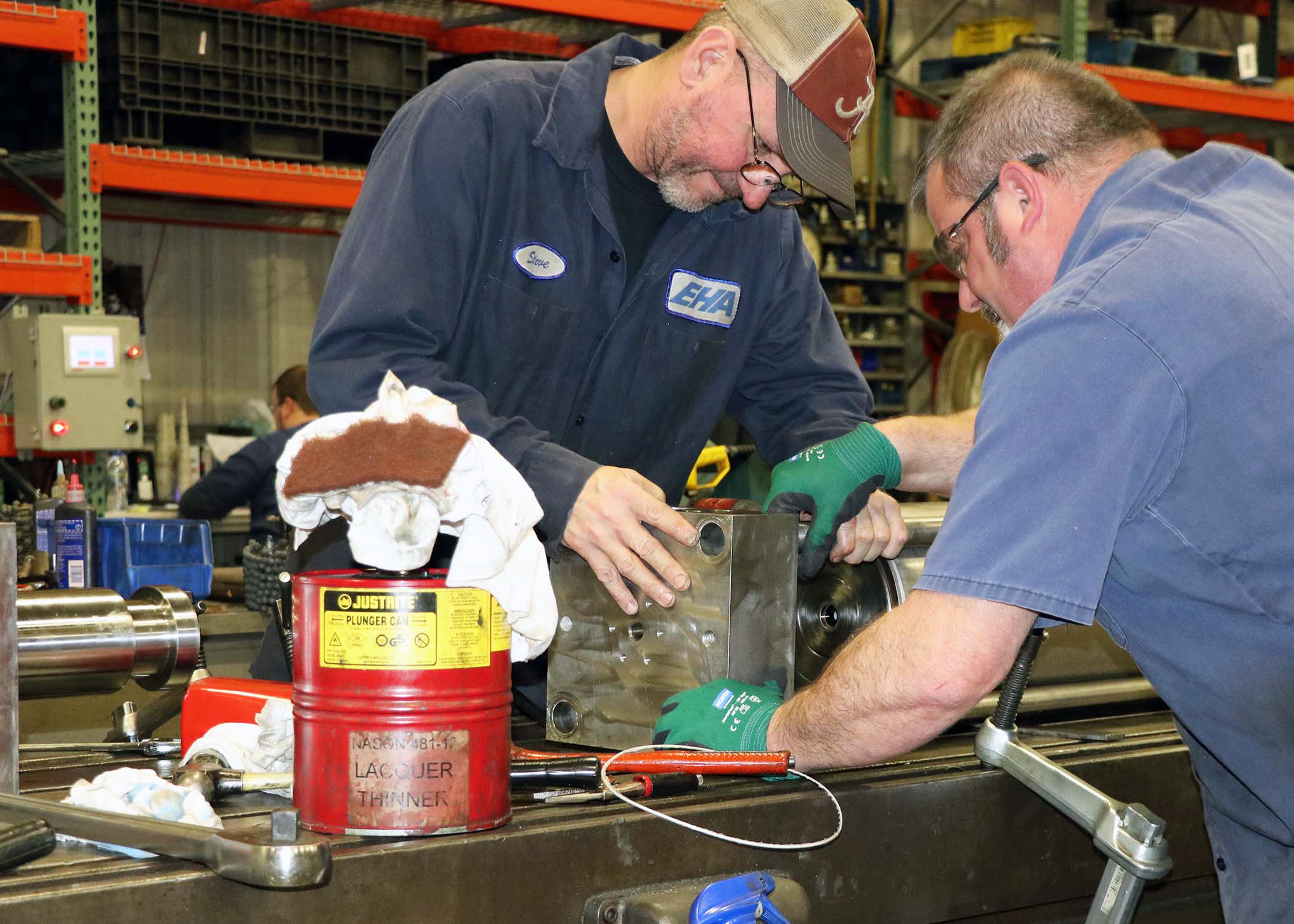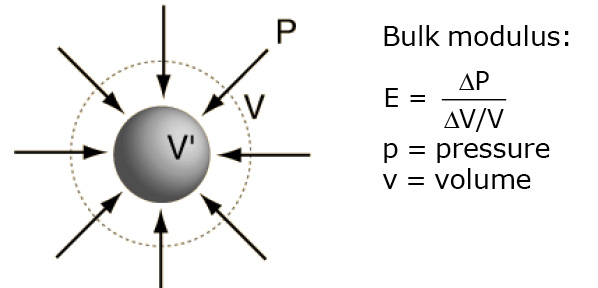Turning Cylinder Failure into Real Value: 10 Key Factors In Selecting A Repair Facility
 By Billy Rebman, Repairs Manager, EHA
By Billy Rebman, Repairs Manager, EHA
When you have cylinder failure, you must decide whether to buy new or repair. The benefits of repairing may include shorter lead times, significant cost savings over new cylinders, and in many cases the ability to identify the causes of the failure.
Hydraulic failure can occur through lack of adequate maintenance and damage. The results can be expensive and, even worse, cause long lasting damage and even injury. Diagnosing hydraulic failure is essential to establish what remedial or other action needs to be taken.
SAVE BY REPAIR
Breakdowns can occur anytime. They rob you of valuable production time and profit. Repairing a cylinder can save approximately 40% to 50% the cost of new. Although a large portion of the savings comes as a direct result of using existing parts in the repair process, this will not compromise the quality or performance of a repaired cylinder.
SAVE WITH INVESTIGATIVE INFORMATION
Cylinders sent in for repair receive a thorough inspection at the start of the repair process. During this phase, the technicians check for any stress that may have been placed on the unit from excessive side loads, improper mounting, fluid contamination, or defective seals. The inspection enables the technicians to determine the possible causes of the failure. The information gathered during the inspection may help you make adjustments and correct issues with your related equipment, extending the life of your cylinders. Simply purchasing new cylinders may not address the issues that can lead to repeat failure of the new product.

Here is a list of the top 10 factors to consider in determining which repair company to use:
- Do they have reliable service and good
customer support? - Do they have experience working on cylinders from various manufacturers?
- After the initial inspection, do they provide feedback on the possible causes of the failure?
- Do they use OEM-equivalent or better
components in their repairs? - Do they have adequate in-house machining capabilities?
- Are the repaired cylinders tested?
- Are their quotes competitive?
- What is the typical turnaround time on a cylinder repair?
- Do they offer rapid-response delivery when needed?
- What kind of warranty do they offer on
cylinder repairs?
QUALITY CONTROL AND TESTING
An important part of quality control is testing every repaired cylinder. A standard testing procedure ensures that the cylinder will be ready for immediate use when it leaves the facility. A repair or refurbishing goal is to return rebuilt equipment to its original specifications or better.
Cylinder wear and tear varies per industry. There are many good large and small service and repair companies that may meet the requirements of on-location system service and maintenance. However, it may be more suitable on some projects to send the outdated or defective component to a central repair facility. Urgency is often a factor, and the cost of being down a piece of equipment is also key. Here are a few examples of both on-location and off-site repair facility projects.
MINING
A large mining operation kept sending back cylinders for repair; they were breaking cylinder rods every five to six weeks. Their repair facility repaired the cylinders but took it one step further: they looked at the mine’s systems on location and suggested some equipment changes. Much of the equipment was 60 to 70 years old. After assessing the situation, a manifold block that would control the load instead of bouncing the chutes was recommended. The mine chose a service facility that could help it upgrade to newer technologies.
 FOOD PROCESSING & PACKAGING
FOOD PROCESSING & PACKAGING
A large food processing operation with three plants required maintenance to repair and refurbish its central hydraulic system, which ran the plant conveyors. However, the firm lacked enough mechanics and technicians to do maintenance on such a scale. The outsourced, on-location project took three to four weeks to complete. It involved servicing and replacing all the hydraulic valves, filtration elements, and total service on 14 electric pumps and motors. The equipment was old, and the suppliers that still manufactured the components for this system were not considered a good fit for the project. While spending ample time at one of the plants, it was discovered that a more superior cylinder manufacturer with a special rod material suitable for the application would be a solution for the short life cycle of their existing cylinders. This chance encounter resulted in an upgrade to a better cylinder and service contract.







